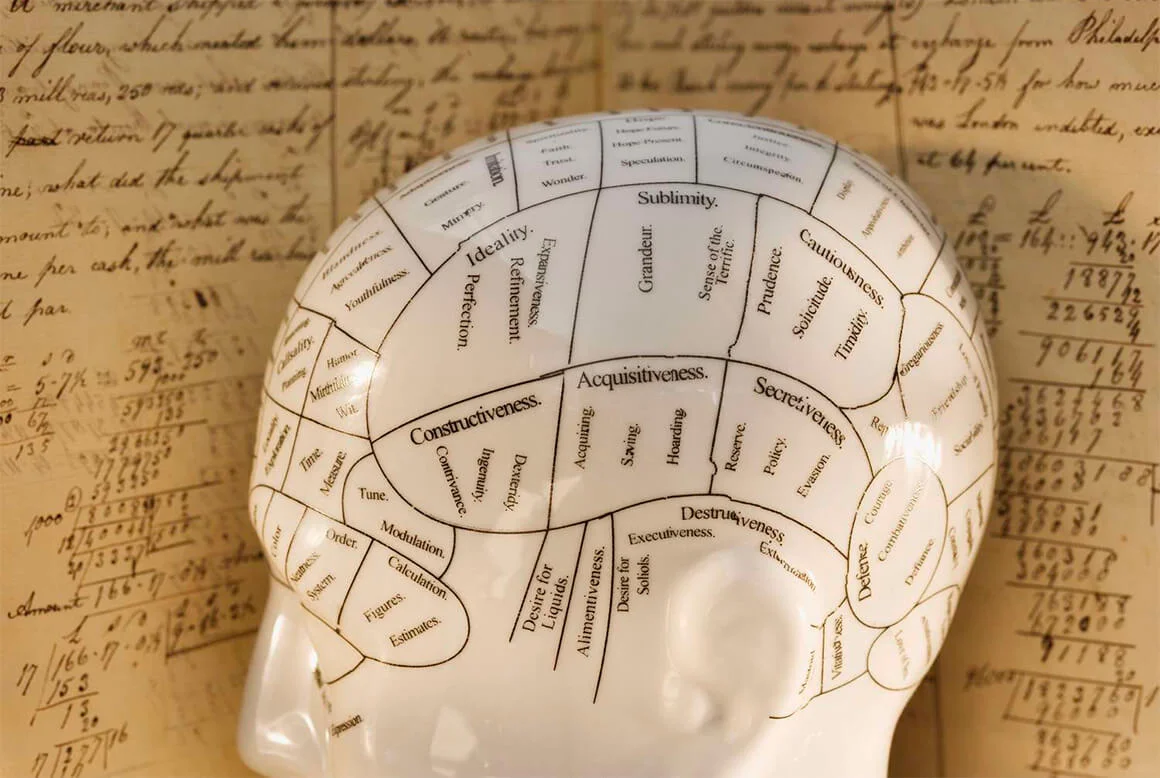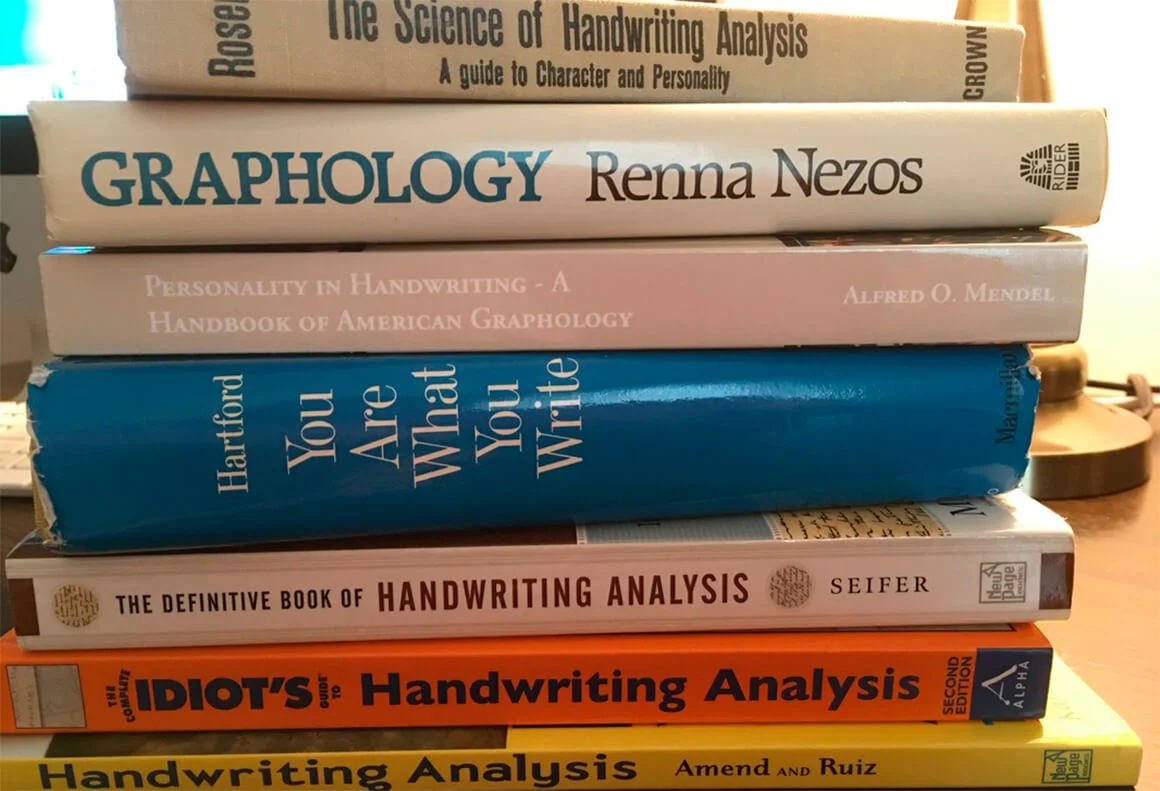How to determine a person’s character by handwriting? This question has interested people from ancient times to the present day. And the answer to it is given by graphology – a science that studies a person’s handwriting in order to determine his psychological characteristics, character and individuality. Handwriting analysis helps to learn a lot about a person, his potential, abilities and shortcomings.
Graphology originated in France in the 19th century and quickly became a popular scientific discipline, applied in various fields such as law, psychology, criminology and personnel selection. Today, graphologists use various methods and approaches to analyze handwriting, based on parameters such as the size and shape of letters, slant, pressure, spacing between words, and others.
It is believed that handwriting reflects a person’s internal state, his thinking, feelings and emotions. Thanks to handwriting analysis, it is possible to identify characteristics such as the level of self-esteem, self-confidence, sociability, ambition, creative potential and much more.
Modern graphology is a powerful tool for psychologists, HR professionals and criminologists who can use handwriting analysis to determine a person’s character and tendencies.
However, it should be noted that graphology is not an absolutely exact science, and the results of handwriting analysis can be very subjective. Therefore, to obtain the most reliable information about a person and his character, graphology should be used in combination with other methods, such as interviews, testing and observation.
In addition, there are many critics of graphology who argue that its methods and techniques are not scientifically based and have not been properly scientifically tested. There is an opinion that graphologists are susceptible to subjectivity and are prone to using stereotypes when analyzing handwriting.
Thus, although graphology can be a useful tool for obtaining information about a person and his character, its results should be considered in the context of other personality assessment methods and should not be relied upon alone when making important decisions.

How to determine a person’s character by handwriting: basic principles of graphological analysis
Graphological analysis is a method of studying a person’s handwriting in order to determine his character, personal qualities, emotional state and other psychological factors. The basic principles of graphological analysis are:
Letters shape and its meaning
The shape of the letters in a person’s handwriting can provide some information about their character, but this information is not completely accurate and cannot guarantee a complete understanding of the person’s personality. Here are some examples of letter shapes and their possible meanings:
- Rounded letters.Soft, rounded letter shapes most often indicate a friendly, warm and emotional character. Such people willingly share their thoughts and feelings.
- Sharp corners and narrow letters. People with this style are more secretive, analytical and rational. They pay attention to details and are more critical.
- Big letters. Writing in big letters can indicate confidence, ambition and a desire to make a statement. Such people are extroverted and strive for success.
- Small letters. Writing in small letters indicates modesty, introversion and a tendency towards introspection. Typically, such people are more reserved and prefer to avoid attention.
- Messy handwriting. If the handwriting is messy and seems uncertain, this may indicate mental hesitation or instability of character. Such people have difficulty making decisions and often change their point of view.
- Neat handwriting. Smooth and neat handwriting indicates organization, responsibility and calmness. These are reliable people with good planning skills and the ability to control their emotions.
Handwriting slant and its interpretation
In graphology, the slant of handwriting is also considered an important aspect when analyzing a person’s character and personality. However, as with letter shapes, this information cannot guarantee a complete understanding of a person’s personality. Here are some typical handwriting slants and their possible interpretations:
- Direct slant (vertical writing). People with straight handwriting tend to be more independent, rational, and in control of their emotions. They are cautious, reserved, preferring to keep their distance from others and act objectively.
- Slant to the right. Right-leaning spellings are typically associated with extroversion, sociability, and friendliness. Such people are often emotional, empathetic and establish warm relationships with others. They may also be more impulsive and open to new ideas and experiences.
- Slant to the left. People with a left tilt tend to be introverts. They are secretive, restrained in their emotions, more selective, cautious and independent. In some cases, it may also indicate a strong attachment to the past or parents.
- Irregular slant. If the slant of the handwriting is inconsistent and changes from letter to letter, this indicates instability of emotions, uncertainty or fickleness of character. These people often change their minds and may have difficulty making decisions.
In addition to the slant and shape of letters, graphologists also take into account other aspects of handwriting, such as:
Size of writing zones. The upper, middle and lower zones of writing can reflect different aspects of personality. A large upper zone can indicate ambition and a desire for success, while a large lower zone can indicate strong emotional ties and needs.
The top, middle and bottom zones refer to different parts of handwriting that can be analyzed in graphology to identify personality traits. Here is a brief description of each zone:
- The top zone includes the top parts of letters, such as the branches and loops in the letters “b”, “d”, “h”, “l”, “t” and so on. The upper zone is associated with a person’s intellect, ambitions, dreams and ideals.
- The middle zone includes the main parts of letters such as “a”, “c”, “e”, “m”, “n”, “o”, “r”, “s”, “u”, “v”, ” w”, “x”, “z”, etc. The middle zone is associated with everyday aspects of a person’s life, such as work, communication and friendships. The basic characteristics of personality are also revealed here.
- The lower zone includes the lower parts of letters, such as the tails and loops in the letters “g”, “j”, “p”, “q”, “y”, etc. The lower zone is associated with the physical needs, instincts and emotions of a person.
Spaces between words and lines. Wide spaces between words indicate independence and a desire to maintain personal space, while narrow spaces indicate dependence on others and a desire to be close to people. The spacing between lines can also reflect the degree of organization and planning.
Speed and tension of writing. Fast handwriting indicates impulsiveness, decisiveness and energy, while slow handwriting can indicate thoroughness, thoughtfulness and pragmatism. High tension in writing reflects stress, aggression, or control, while low tension indicates relaxation and flexibility.
Handwriting analysis in graphology can provide some insight into a person’s character and personality, but it should be used with caution and take into account other aspects of personality such as behavior, motivation and communication.
The size of the letters and its reflection on the character
The size of the letters in a person’s handwriting can sometimes reflect some of his personality traits, but this is not a strict rule and many other factors need to be taken into account.
Here are some general assumptions about the relationship between letter size and a person’s character:
- Large handwriting. People with large handwriting are more likely to be sociable, confident and ambitious. They strive to express themselves and want to be the center of attention.
- Average handwriting usually characterizes a person as flexible and adaptive, able to find a balance between communication and introversion, and usually stable in his behavior.
- Small handwriting. People with small handwriting are more focused, detail-oriented, and organized. They may be more reserved in communication and prefer to observe the situation rather than be an active participant.
The connection between letters and its meaning
The connection between letters in handwriting is the way they are connected to each other in words when written. In the context of graphology, the relationship between letters can be analyzed to reveal the characteristics of a person’s character. Here are several types of connections between letters and their possible meanings:
- Smooth and continuous connection. If the connection between letters is smooth and continuous, this indicates that the person has good communication skills, logical thinking and consistency in actions.
- Uneven connection. If the connection between letters is uneven, it may indicate instability of emotions, inconsistency or indecisiveness of the person.
- Lack of connection. If there is no connection between letters and the letters are isolated from each other, this may indicate independent thinking, creativity and individualism. However, it can also indicate difficulties in communication and lack of cooperation with others.
You need to understand that graphological analysis of handwriting is only an additional tool and should not be used as the main method of determining a person’s character. People can change their handwriting depending on the situation, mood or age, so graphological analysis is not always an accurate indicator of personality.
Graphology is a controversial science, and many researchers believe that it cannot be used as a basis for accurately determining a person’s character. Personality is shaped by many factors, including genetics, upbringing, and life experiences, so relying solely on handwriting analysis should not be relied upon.

Step-by-step instructions for determining a person’s character by handwriting
Graphological analysis can be performed using the following step-by-step instructions:
- Determining letter shapes. Study the shape and style of letters in handwriting. Pay attention to the roundness, sharpness of angles, proportions and degree of completeness of the letters. This can help determine how neat, organized, or creative a person is.
- Slope analysis of handwriting. Evaluate the slant of letters in handwriting. A tilt to the right can indicate extroversion and emotionality, a tilt to the left can indicate introversion and reserve, and a vertical tilt can indicate balance and control over emotions.
- Estimating letter size. Estimate the size of letters in handwriting. Large letters can indicate confidence and ambition, medium letters can indicate flexibility and adaptability, and small letters can indicate attention to detail and restraint.
- Study of the connection between letters. Learn the connections between letters in words. Smooth and continuous communication can indicate good communication skills and logic, uneven communication can indicate emotional instability, and lack of communication can indicate independent thinking and creativity.
- Determination of a person’s character. Gather all the data you have gathered from the previous steps and try to make a generalized conclusion about the person’s character, taking into account other factors such as genetics, upbringing and life experiences.

Examples of graphological analysis
Graphological analysis can be used to determine various aspects of personality. Here are examples of analysis to determine self-confidence, organization and neatness, and creativity through handwriting.
Definition of a person’s self-confidence
- Letter size. Capital letters can indicate confidence and ambition.
- The slant of the letters. Vertical or slightly slanted handwriting to the right most often indicates self-confidence.
- Pressure force. Firm and even pressure indicates determination and self-confidence.
- Omission of dot or its presence above the letter “i”. If point are placed immediately and carefully, this indicates self-confidence.
- Baseline. A stable baseline on which words are written indicates a person’s confidence and stability.
Showing organization and neatness
- Letter shape. Finished, neat and even letters indicate an organized and neat person. A clear and understandable manuscript usually demonstrates attention to detail.
- Letter size. Medium letter size can indicate flexibility and adaptability, which is also associated with organization and neatness.
- Space between words and lines. Even spacing between words and lines indicates systematicity and organization. This shows that the person pays attention to the space and structure of the text.
- Writing speed. Moderate writing speed is a sign of accuracy and control. Writing too quickly may indicate haste and lack of attention to detail, while writing too slowly may indicate over-precision or indecisiveness.
- Consistency between lowercase and uppercase letters. If lowercase and uppercase letters are written consistently and according to grammatical rules, this can also indicate organization and neatness.
- Punctuation marks. Correct use of punctuation marks such as periods, commas, and dashes demonstrates attention to detail and ability to structure text.
Determining creative potential by handwriting
- Letter shape. Unusual, original or variable letter shapes can indicate creativity and individuality. Creative people often have a unique style that reflects their unique character.
- Connection between letters. The absence of connections between letters or inconsistent connections indicates independent thinking and creativity. This shows that a person is able to think “outside the box” and avoid stereotypes.
- The slant of the letters. The inconsistent inclination of letters or a mixture of inclinations speaks of a creative character and flexibility of thinking. Creative people are prone to experimentation and change, which can be reflected in their handwriting.
- Variety of letter sizes and styles. Using different letter sizes and styles in the same text can indicate creativity and emotional intelligence. Such handwriting demonstrates a variety of ideas and the ability to adapt to different situations.
- Ornamentation and decorative elements. The presence of decorative elements such as curls, loops and other graphic decorations indicates a creative nature.
Practical tips for successful graphological analysis
- To obtain more accurate analysis results, it is recommended to use several handwriting samples from one person. This will help take into account possible changes in handwriting caused by temporary factors such as mood, fatigue or stress.
- To successfully conduct graphological analysis, you need to become familiar with the variety of handwriting styles and their characteristic features. This will help determine which elements of handwriting are associated with certain personality characteristics.
- Age and cultural context can significantly influence the style and form of writing. Take these features into account when analyzing to avoid incorrect conclusions.
- Graphological analysis requires developing skills and experience. Regular practice of analyzing different handwriting samples will help improve your skills and interpretive abilities.
- It is important to constantly follow news in the field of graphology. This will help you learn about new methods, techniques and approaches to graphological analysis.

Limitations and disadvantages of graphological analysis
Graphology is a controversial science, its effectiveness and reliability are often questioned. Some studies do not support the statistical significance of graphological analysis for determining personality characteristics.
In graphology there are no universal standards for interpreting handwriting. Different graphologists may use different methods and theories, sometimes leading to conflicting results.
Handwriting can change due to many external factors such as fatigue, stress, age or health. This makes it difficult to accurately assess a person’s character based on it.
Graphological analysis can provide only limited information about a person’s character, and it is shaped by many factors, and handwriting analysis cannot take into account all these aspects.
Graphological analysis can be subjective, since the graphologist bases conclusions on his knowledge, experience and beliefs. This can lead to errors and misinterpretations.
Graphological analysis does not always take into account the context in which the handwritten text was created. For example, handwriting in a hurry or a stressful situation may differ from a person’s normal handwriting.
The influence of external factors on handwriting
External factors can have a significant impact on handwriting, making it less stable and predictable. Some of the most common external factors that influence writing style include:
- Fatigue. Physical and mental fatigue can change handwriting, making it less clear, neat, and controlled. Fatigue can also lead to more typing errors and disproportionate space on the page.
- Stress and emotions. Stress, anxiety, anger or joy can affect handwriting. An emotional state can lead to changes in the size, shape, inclination and connection between letters.
- Health. Health conditions, including problems with the musculoskeletal system, nervous system, or diseases that affect motor skills, can change handwriting. Such changes can be temporary or permanent.
- Age. As we age, handwriting can become completely different due to physiological changes such as decreased vision, loss of muscle strength, or decreased coordination.
- Writing tools. Different writing tools, such as pens, pencils, or markers, affect handwriting. It can also be affected by the quality of the paper on which the text is written.
- Pose and lighting. An awkward writing posture or insufficient lighting often changes handwriting, making it less clear and neat.
- Training and cultural differences. Different educational systems and cultural characteristics can affect the style and form of handwriting.
All of these factors can significantly influence handwriting, making it a less reliable indicator of personality characteristics, and this is important to consider when analyzing handwritten text.
Individual differences in handwriting
Individual differences in handwriting arise from the unique characteristics of each individual, such as personality traits, educational level, cultural context, and motor coordination. Here are some examples of individual differences in handwriting:
- Some people have their own unique letter shapes that reflect their personality traits, emotions, and education. The shape of the letters can be round, sharp, angular or mixed.
- The size of letters also varies among people. Some write in capital letters, others in small letters. Letter size correlates with certain personality characteristics, such as confidence, extroversion, or introversion.
- The slope of the letters is also an individual indicator. It can be vertical, tilted to the left or to the right. The slope often indicates emotional and social preferences.
- Individual differences in letter proportions reflect levels of neatness, attention to detail, and organization.
- The style of connecting letters in words can vary from person to person. Some write with clear connections between letters, others without connections or with overlapping letters. The connections between letters can indicate the speed and degree of automation of writing, as well as the degree of independence and originality of thinking.
- Individual differences in hand pressure may be associated with emotional tension, level of internal energy, and degree of aggression or confidence.
- The placement of text on the page, the orientation of words relative to the baseline, and the spacing between lines are also individual characteristics of handwriting. They indicate organization, planning, and control over the writing process.
- Unique text embellishments, loops, flourishes and additional elements in handwriting reflect individual characteristics such as creativity, originality and degree of self-expression.
- Punctuation, spelling and grammar also differ among many. Most often this is due to education, cultural context and personal preferences.
- The speed at which a person writes is also considered an individual indicator. It can match the level of activity, determination and ability to think quickly.
The need to take into account context and additional factors
As mentioned earlier, external factors such as fatigue, stress, health, age, writing tools, posture, and lighting can significantly affect handwriting. Taking these factors into account helps to make more accurate conclusions and avoid false judgments about a person’s personality and character.
Different cultures and educational systems can influence the style and form of handwriting. Taking into account the cultural context allows us to adapt its interpretation to different cultures and educational systems.
Educational level and experience often influence handwriting, including spelling, grammar, and text structure. Taking education and experience into account allows us to better understand how these factors influence handwriting.
The circumstances under which the text was written are also reflected in the handwriting. For example, text written in a hurry or under pressure may differ from text written in a calm environment. Taking into account situational circumstances contributes to adequate assessment and interpretation of analysis results.
Each person has their own unique handwriting characteristics, which can change over time. Taking into account individual characteristics helps to develop more flexible and adaptive methods of analysis.
In some cases, it is useful to compare one person’s handwriting with other people’s handwriting or with samples from different time periods. This makes it possible to determine which handwriting features are stable and characteristic of a given person, and which may be temporary or conditioned by circumstances.
The content and structure of the text also matter in graphological analysis. For example, a personal letter may reflect different character traits than a formal document or academic assignment. Taking into account textual context helps to better understand which aspects of personality are manifested in different situations and genres of text.
It is important to approach handwriting analysis objectively and without prejudice. Taking into account context and additional factors helps to avoid stereotypes and erroneous judgments based on limited information.
Graphological analysis can be a useful personality research tool, but its results must be considered in combination with other methods, such as psychological testing, behavioral observation, interviews, or social network analysis. This way you can get a more complete and accurate picture of a person’s character.

Application of graphology in various areas of life
Graphology can be used in various areas of life to obtain additional information about a person’s personality and character. Here are some examples of its use:
- Personnel selection and personnel assessment. Graphology is used when hiring employees to assess their personality traits, stress tolerance, teamwork and leadership skills.
- Forensic examination and criminology. In some cases, graphologists are used to confirm the authorship of a signature or handwritten text, as well as to determine the personal characteristics of the criminal.
- Psychotherapy and psychological consultation. Studying handwriting helps psychologists and psychotherapists better understand the personality traits of their patients and choose the most appropriate treatment and support methods.
- Education and career counseling. Graphology is used to determine the inclinations and creative potential of students, which helps them in choosing a profession or educational program.
- Study of the personality of historical figures. Graphologists help historians study the character of famous historical figures through their written works and correspondence.
- Personal development. A graphological analysis of your own handwriting helps you understand your strengths and weaknesses, as well as identify those aspects of your personality that can be improved or developed.
- Social studies. Graphology is used in sociological and psychological research to study the trends and characteristics of certain social groups, for example, depending on age, gender, profession or cultural context.
- Family and marital therapy. Graphological analysis of spouses’ handwriting can reveal hidden conflicts, misunderstandings or differences in character, which helps counseling psychologists in choosing the most effective methods of working together to solve problems and improve relationships.
- Analysis of creative processes. Graphology is used to analyze the handwriting of artists, writers and other creative individuals in order to study the characteristics of their creative process and understand how a person’s personal characteristics influence his creativity.
- Communication skills. Studying handwriting allows you to determine the characteristics of a person’s communication style, which can be useful for developing communication skills and improving relationships with others.
- Marketing and branding. Graphology is used to research consumer preferences, which helps companies develop effective marketing and branding strategies.
- Team building and personnel management. Graphological analysis of employee handwriting allows managers to identify the strengths and weaknesses of their subordinates, as well as identify potential for developing teamwork and improving productivity.
It is important to remember that graphology must be used with caution and within its limitations. The results of graphological analysis can be useful and informative, but they should not be considered the only or definitive source of information about a person’s personality and character.

Use of graphology in different countries of the world
- In France, graphology is very popular and is actively used in business, especially in the recruitment process. Assessing job candidates’ handwriting is an important part of the selection process.
- In Spain and Italy, graphology also has great recognition and many companies use it to assess the personality, character and professional skills of candidates.
- Argentina has an Association of Graphological Experts that trains and certifies graphologists and sets standards for quality and ethics in the field of graphology.
- In Israel, graphology is used in forensic science, including analyzing handwriting in documents and determining the authenticity of handwritten wills.
- In Switzerland, the use of graphology is widespread in the field of education, especially in the process of assessing the educational achievements and abilities of students.
- In the UK and US, graphology is not as popular as in some European countries, but it is still used for forensic analysis, personality assessment and career and relationship advice.
- In Ukraine, graphology is also used in criminology, to assess the personal characteristics and professional suitability of job candidates.
- In China, graphology is a relatively new field, but it is already attracting the attention of specialists in the field of psychology and management.
- In Germany, graphology is closely related to psychology, and many professional graphologists have a psychological background. Graphology has applications in a variety of fields, including criminology, personality assessment, and career counseling.
- In India, graphology is also gaining popularity, especially in the areas of personal development and career advice. Graphologists provide workshops and training to help people better understand themselves and their abilities through the analysis of their handwriting.

Recommended literature on graphology
If you are interested in graphology, want to deepen your knowledge in this area and learn how to determine a person’s character by handwriting, here are a few books that will be useful to you:
- “Handwriting Analysis: The Complete Basic Book” by Karen Christophersen. This is a comprehensive introductory course to graphology that is suitable for beginners.
- “Handwriting Analysis: Putting It to Work for You” by Andrea McNee and Jeffrey A. Nelson. This book provides practical examples of the use of graphology in various areas of life, including work and personal relationships.
- “The Definitive Book of Handwriting Analysis: The Complete Guide to Interpreting Personalities, Detecting Forgeries, and Revealing Brain Activity Through the Science of Graphology” graphology” by Marcia Konig.
- “Graphology – The Art of Handwriting Analysis” by Julian Rawle. This book offers an interesting look at the history of graphology and introduces various methods of handwriting analysis.
- “Handwriting Psychology: Personality Reflected in Handwriting” by Helmut Ploesner. This book explains how handwriting features are related to human psychology.
- “Sex, Lies, and Handwriting: A Top Expert Reveals the Secrets Hidden in Your Handwriting” by Michelle Dresbold. This book describes a number of real crime cases in which graphology played an important role.
- “Your Handwriting Can Change Your Life” by Vimala Rogers. This book explains how changing your handwriting can improve your life, increase your self-esteem, and develop positive personality traits.
- “The Hidden Language of Handwriting: Understanding Personality from Handwriting” by James Greenblatt. It offers an innovative approach to graphology and explains how handwriting reflects a person’s inner world and his worldview.
- “The Psychology of Handwriting” by Robert Saudek. This classic work provides a detailed analysis of the psychological aspects of handwriting and its impact on personality.
- “How to Analyze Handwriting: A Practical Guide for Beginners” by Richard D. Harper. This guide offers detailed instruction on handwriting analysis, including identifying different handwriting styles and their characteristics.

Graphologists’ Associations for Professional Communication and Experience Exchange
There are several associations of graphologists that provide their members with platforms for professional communication, training, exchange of experience, improvement of skills, certification and publication of research results. Some of them include:
- The British Institute of Graphologists (BIG) – The British Institute of Graphology is one of the leading associations of graphologists in the UK.
- The International Graphanalysis Society (IGAS) is an international association of graphologists.
- Associazione Italiana Grafologi (AIG) is the Italian association of graphologists.
These associations and associations will help you establish connections with other graphologists, exchange experiences and knowledge, and develop your professional skills in the field of graphology. They can offer a variety of resources, including training, certification, conferences, publications, and online forums for discussing graphology topics.




